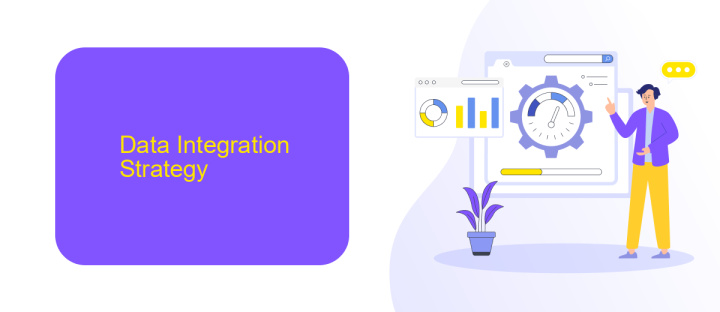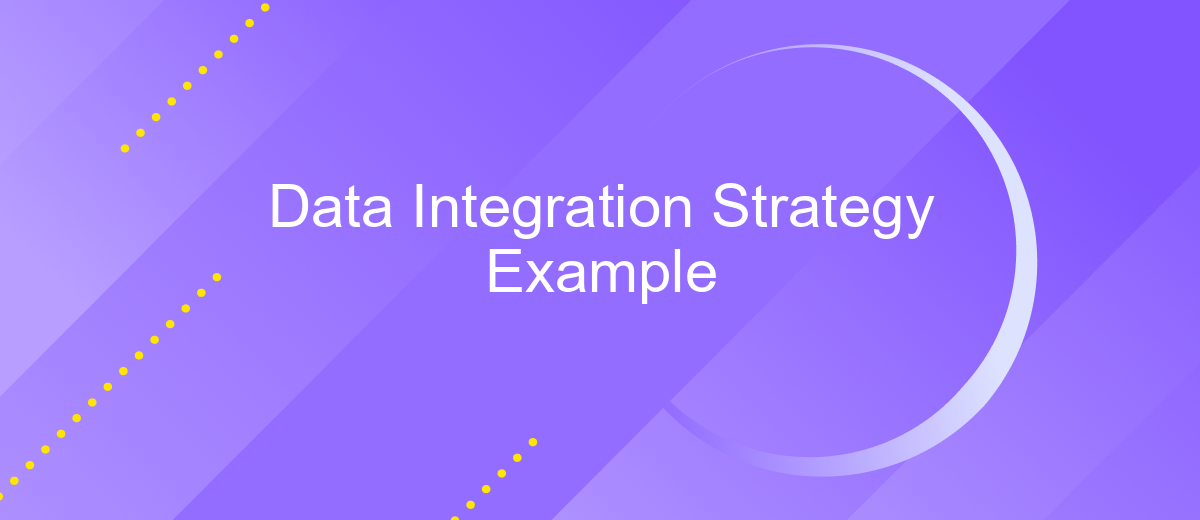Data Integration Strategy Example
In today's data-driven world, an effective data integration strategy is crucial for businesses aiming to harness the full potential of their information assets. This article provides a comprehensive example of a data integration strategy, highlighting key components and best practices to ensure seamless data flow across various systems and platforms, ultimately driving informed decision-making and operational efficiency.
Executive Summary
In today's data-driven world, a robust data integration strategy is crucial for organizations aiming to streamline operations and make informed decisions. Effective data integration ensures that information from various sources is seamlessly combined, providing a unified view that enhances business intelligence and operational efficiency.
- Identify data sources and establish connectivity
- Utilize integration platforms like ApiX-Drive for seamless data flow
- Implement data transformation and cleansing processes
- Ensure data security and compliance
- Monitor and maintain integration workflows
By leveraging tools such as ApiX-Drive, businesses can automate data integration processes, reducing manual effort and minimizing errors. This not only saves time but also ensures that data is accurate and up-to-date, empowering organizations to make strategic decisions based on reliable insights.
Data Integration Strategy

Developing a robust data integration strategy is essential for organizations aiming to streamline their operations and enhance data accessibility. The first step involves identifying the data sources that need to be integrated, including databases, cloud services, and third-party applications. It is crucial to establish clear objectives and key performance indicators (KPIs) to measure the success of the integration process. Additionally, selecting the right tools and technologies that align with the organization's needs is vital for seamless data integration.
An effective data integration strategy also involves setting up automated workflows to minimize manual intervention and reduce errors. Services like ApiX-Drive can be instrumental in this regard, offering a user-friendly platform to connect various applications and automate data transfers. By leveraging such tools, organizations can ensure real-time data synchronization, improve data accuracy, and enhance overall efficiency. Regular monitoring and maintenance of the integration processes are also necessary to address any issues promptly and ensure continuous data flow.
Data Integration Tools and Technologies

Data integration is essential for businesses to consolidate information from various sources into a unified view. Several tools and technologies facilitate this process, ensuring data consistency, accuracy, and accessibility.
- ETL Tools: Extract, Transform, Load (ETL) tools like Apache Nifi, Talend, and Informatica help in extracting data from different sources, transforming it into a suitable format, and loading it into a data warehouse.
- Data Integration Platforms: Platforms such as ApiX-Drive offer seamless integration of various applications and services, enabling automated workflows and real-time data synchronization.
- API Management Tools: Tools like Postman and Swagger assist in managing and integrating APIs, ensuring smooth communication between different systems.
- Data Virtualization: Technologies like Denodo and Red Hat JBoss Data Virtualization allow access to data without needing to know its physical location, providing a unified view of data across multiple sources.
Choosing the right data integration tools and technologies depends on the specific needs and infrastructure of your organization. Leveraging these tools can significantly enhance data management, streamline operations, and drive better decision-making.
Data Governance and Security

Effective data governance and security are critical components of any data integration strategy. Ensuring that data is accurate, consistent, and secure across different systems helps organizations make informed decisions and maintain compliance with regulatory standards. Implementing robust governance frameworks can mitigate risks associated with data breaches and unauthorized access.
To achieve this, organizations must establish clear policies and procedures for data handling, storage, and access. This includes defining roles and responsibilities, implementing data quality standards, and regularly auditing data processes. Leveraging tools like ApiX-Drive can streamline the integration process while maintaining high security standards.
- Define data governance policies and procedures
- Implement data quality standards and regular audits
- Utilize secure integration tools like ApiX-Drive
- Establish roles and responsibilities for data management
By focusing on data governance and security, organizations can ensure that their data integration efforts are both effective and compliant. Tools like ApiX-Drive not only facilitate seamless integration but also provide robust security measures to protect sensitive information. This holistic approach to data management helps maintain the integrity and reliability of organizational data.


Data Integration Implementation
Implementing a data integration strategy involves several key steps to ensure seamless and efficient data flow between systems. First, it's crucial to identify the data sources and destinations, understanding the data formats and protocols used. Next, mapping the data fields between these systems helps in maintaining data consistency and integrity. Utilizing middleware or integration platforms like ApiX-Drive can significantly streamline this process by offering pre-built connectors and automation tools, reducing the need for custom coding.
After setting up the initial connections, it's essential to establish data governance policies to manage data quality, security, and compliance. Regular monitoring and maintenance of the integration processes are also vital to address any issues promptly and optimize performance. ApiX-Drive provides comprehensive monitoring and alerting features, allowing you to quickly detect and resolve any disruptions. By leveraging such platforms, organizations can achieve a robust and scalable data integration implementation, ensuring that their data-driven initiatives are both effective and sustainable.
FAQ
What is a data integration strategy?
Why is data integration important for businesses?
What are the common challenges in data integration?
How can businesses automate their data integration processes?
What are the key components of a successful data integration strategy?
Apix-Drive will help optimize business processes, save you from a lot of routine tasks and unnecessary costs for automation, attracting additional specialists. Try setting up a free test connection with ApiX-Drive and see for yourself. Now you have to think about where to invest the freed time and money!

